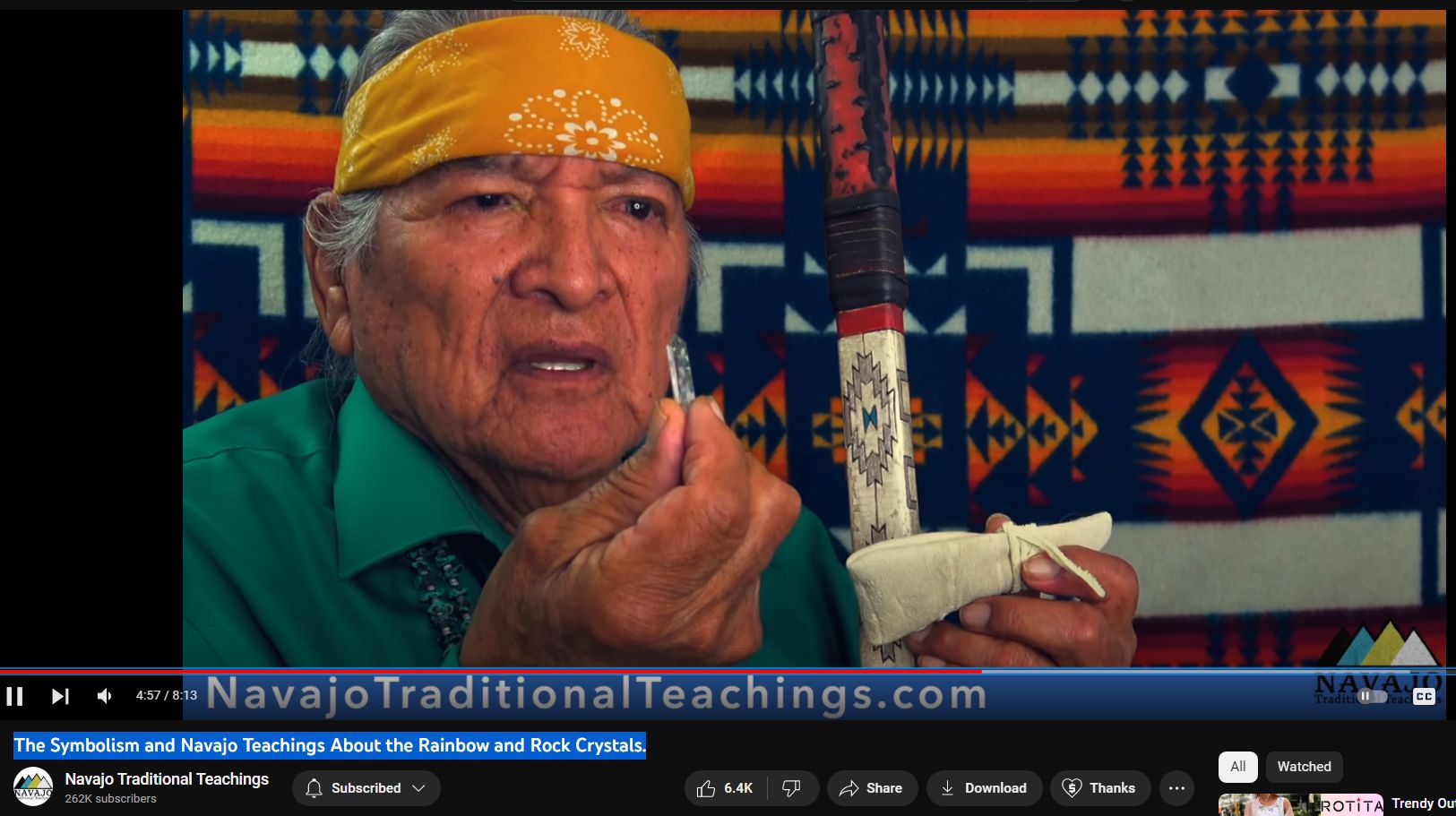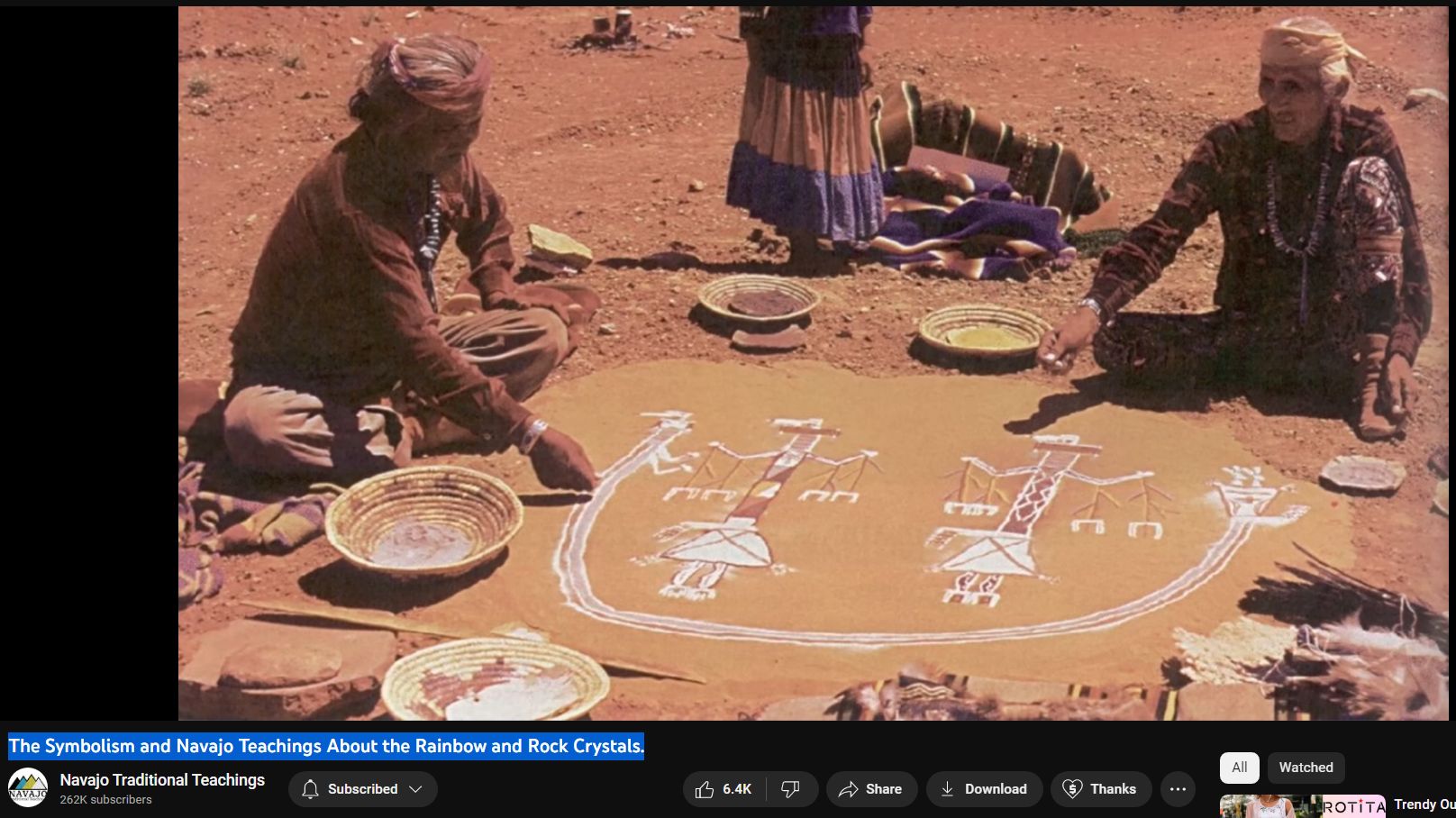Symbolism and Navajo Teachings

Symbolism and Navajo Teachings
Navajo teachings and traditions encompass a rich cultural and spiritual heritage that has been passed down through generations. The Navajo, or Diné, as they call themselves, meaning “The People,” have a deep connection with the land, the elements, and all living things, which is reflected in their myths, stories, and ceremonies. While specific teachings can vary across different regions and clans, common themes often emphasize harmony, balance, and respect for nature and the universe.
Rainbow in Navajo Teachings
The rainbow holds significant symbolism in Navajo culture and is often associated with beauty, diversity, and the connection between the earthly and the spiritual. In Navajo mythology, the rainbow is considered a protective barrier and a bridge between the world and the realm of the deities. It is personified by the Rainbow Goddess, one of the many deities in the Navajo pantheon, who is depicted in sandpaintings and invoked in ceremonies for protection and blessing. The presence of a rainbow in ceremonies symbolizes harmony and serves as a protective shield against evil spirits.
Rock Crystals in Navajo Teachings
Rock crystals, too, hold a special place in Navajo beliefs and practices. They are considered sacred and are used in healing ceremonies and rituals. Navajo healers, known as “Hatałii” (singers or medicine men), use rock crystals in diagnostic and healing practices. The crystals are believed to possess power and clarity, allowing the healer to see into a patient’s body and identify the sources of illness or disharmony.
Crystals are also used in protection and purification rites. They symbolize clarity of mind, purity of spirit, and the connection to the natural world. The use and interpretation of crystals, like many aspects of Navajo spiritual practice, are deeply personal and can vary widely among practitioners.
General Themes in Navajo Teachings
– Harmony and Hozho: A central concept in Navajo philosophy is “Hozho,” loosely translated as beauty, harmony, and balance. Navajo teachings emphasize living in harmony with nature, oneself, and the community. This concept is reflected in daily life, ceremonies, and the Navajo approach to health and well-being.
– Respect for Nature: The Navajo have profound respect for the natural world, which is considered a living entity filled with spirit and life. Mountains, rivers, plants, and animals are all treated with reverence and play significant roles in Navajo mythology and spirituality.
– Interconnectedness: Navajo teachings stress the interconnectedness of all things, suggesting that actions taken in one area of life can affect all others. This belief underlines the importance of making decisions that are considerate of the well-being of the community and the natural world.
Cultural Sensitivity and Preservation
It’s important to note that many Navajo rituals, stories, and symbols are considered sacred and are not shared openly outside the community. What is shared publicly is often only a part of the rich tapestry of Navajo spiritual and cultural life. Respect for the privacy and integrity of these traditions is paramount.
Navajo teachings, including those about rainbows and rock crystals, offer valuable insights into a worldview that is deeply connected to the natural world and the spiritual realm. These teachings continue to influence the Navajo people today, guiding their way of life, their art, and their interactions with the environment and each other.
